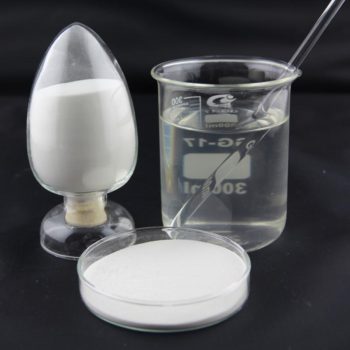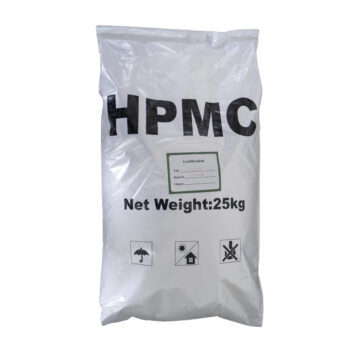The quality of the cellulose determines the quality of the mortar. What do you think?
In the ready-mixed mortar, the amount of cellulose ether added is very low. However, it can significantly improve the performance of wet mortar, which is the main additive that affects the performance of mortar construction.
Reasonable selection of different varieties, different viscosities, different particle sizes, different degrees of viscosity and added amounts of cellulose ether. The improvement in the performance of dry mortar has produced and exerted a positive impact.
First, the concept
Cellulose ether is a synthetic high molecular polymer obtain by chemical modification using natural cellulose as a raw material. Cellulose ether are derivatives of natural cellulose, which are produce differently from synthetic polymers. Its most basic material is cellulose, a natural polymer compound.
Due to the specificity of the natural cellulose structure, cellulose itself does not have the ability to react with etherifying agents. However, after the swelling agent is treat, strong hydrogen bonds are broken between the molecular chains and within the chains.
The active release of the hydroxyl group becomes an alkali cellulose having reactivity. After the etherification agent is react, the OH group is convert into an -OR group to obtain a cellulose ether.
From the solubility properties, it can be divid into ionic and nonionic. The water-soluble nonionic cellulose ether is mainly composed of two series of alkyl ethers and hydroxyalkyl ethers. Ionic CMC is mainly use in synthetic detergent textile printing and dyeing foods and petroleum exploitation.
Non-ionic MC, HPMC, HEMC, etc. are mainly used in building materials, latex coatings, medicine, and daily chemistry. It is use as a thickener, a water retaining agent, a stabilizer, a dispersing agent, and a film forming agent.
Second, the water retention of cellulose ether
Water Retention of Cellulose Ether: In the production of building materials, especially dry mortar, cellulose ether plays an irreplaceable role.especially in the production of special mortar (modified mortar), which is an indispensable part. .
The important role of water-soluble cellulose ether in mortar is mainly three aspects, one is excellent water retention capacity.the other is the influence on mortar consistency and thixotropy, and the third is interaction with cement. The water retention effect of cellulose ether depends on the water absorption of the base layer. the composition of the mortar, the layer thickness of the mortar, the water demand of the mortar, and the setting time of the condensed material.
The water retention of the cellulose ether itself comes from the solubility and dehydration of the cellulose ether itself. It is well known that although a cellulose molecular chain contains a large amount of hydrated OH groups.it is not soluble in water itself because of the high crystallinity of the cellulose structure.
Factors affecting the water retention of the mortar include the viscosity of the cellulose ether. the amount of addition, the fineness of the particles, and the temperature of use.
For particle size, the finer the particles, the better the water retention. After the large particle cellulose ether is in contact with water. the surface dissolves immediately to form a gel to wrap the material to prevent the water molecules from infiltrating.
Sometimes, the mixture is not uniformly disperse and dissolve for a long time to form a turbid flocculent solution or agglomeration. It greatly affects the water retention of cellulose ether, and solubility is one of the factors for selecting cellulose ether.
Water retention is also related to the temperature used, and the water retention of the cellulose ether decreases as the temperature increases. However, in practical materials applications, dry mortars are often apply to hot substrates at high temperatures (above 40 degrees) in many environments, such as exterior wall putty plastering in the sun during summer, which tends to accelerate.
Curing of cement and hardening of dry mortar. The decrease in water retention rate has led to a significant perception that both workability and crack resistance are affected, and the effect of reducing temperature factors under such conditions becomes particularly critical.
Third ,thickening and thixotropic properties of cellulose ethers
Thickening and Thixotropy of Cellulose Ether: The second role of cellulose ether – thickening depends on: the degree of polymerization of cellulose ether, solution concentration, shear rate, temperature and other conditions. The gelling properties of the solution are properties unique to cellulose and its modified derivatives. Gelation properties are related to the degree of substitution, solution concentration and additives.
For solutions with low viscosity of MC and HPMC, 10%-15% solution can be prepare, medium viscosity MC and HPMC can be prepare with 5%-10% solution, while high viscosity MC and HPMC can only prepare 2%-3% solution. Generally, the viscosity classification of cellulose ether is also classified by a 1% to 2% solution.
When the temperature is increase, a structural gel is form and a high thixotropic flow occurs. The high concentration and low viscosity cellulose ether exhibits thixotropic properties even below the gel temperature. This property is of great benefit to the construction of the construction mortar to adjust its leveling and sag.
It should be not here that the higher the viscosity of the cellulose ether, the better the water retention. but the higher the viscosity.the higher the relative molecular weight of the cellulose ether.
And the lower the solubility, which has a negative impact on the mortar concentration and the construction performance. The higher the viscosity, the more pronounce the thickening effect on the mortar, but not the exact proportional relationship.
Fourth, the retardation of cellulose ether
Retarding of cellulose ethers: The third role of cellulose ethers is to delay the hydration of cement. Cellulose ether imparts various beneficial properties to the mortar. And also reduces the early hydration heat release of the cement and delays the hydration process of the cement. This is detrimental to the use of mortar in cold areas.
This retardation is cause by the adsorption of cellulose ether molecules on hydration products such as CSH and ca(OH)2. Due to the increase of the viscosity of the pore solution. the cellulose ether reduces the activity of ions in the solution, thus delaying The hydration process.
In summary, in the ready-mixed mortar, the cellulose ether plays the role of retaining water.thickening, retarding the hydration power of the cement. And improving the construction performance. Good water retention capacity makes the cement hydration more complete.
Can improve the wet viscosity of the wet mortar, improve the bonding strength of the mortar, and adjust the time. The addition of cellulose ether to mechanical spray mortar can improve the spray or pumping performance of the mortar, as well as the structural strength. Therefore, cellulose ether is being widely use as an important additive in ready-mixed mortar.


